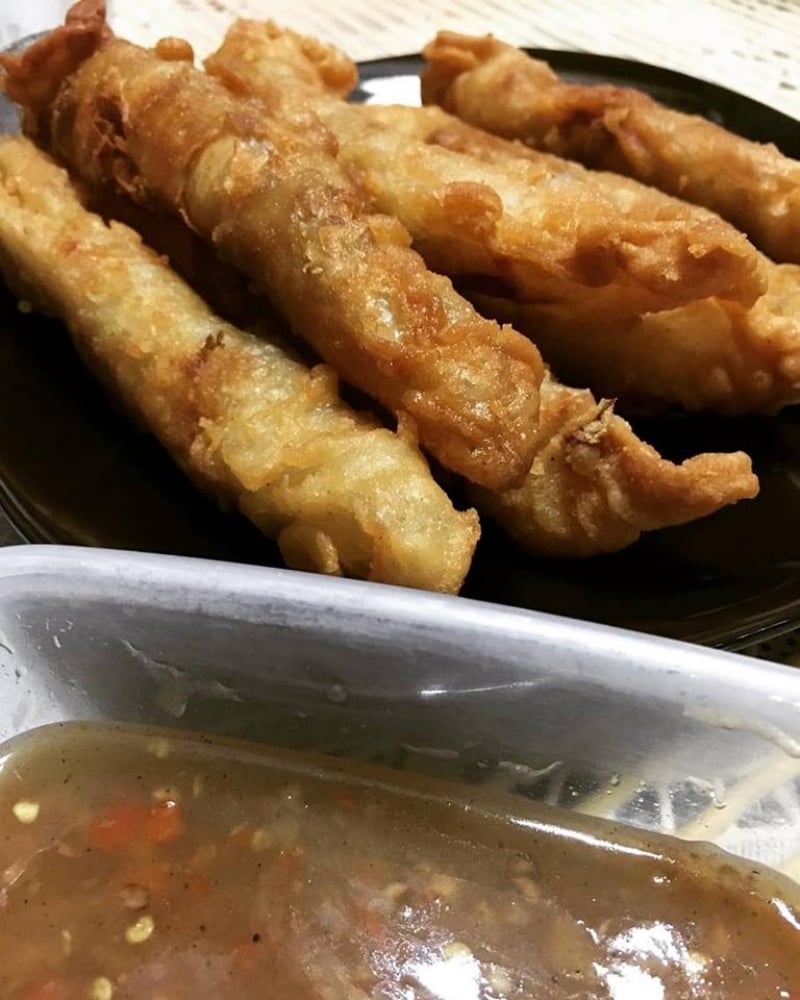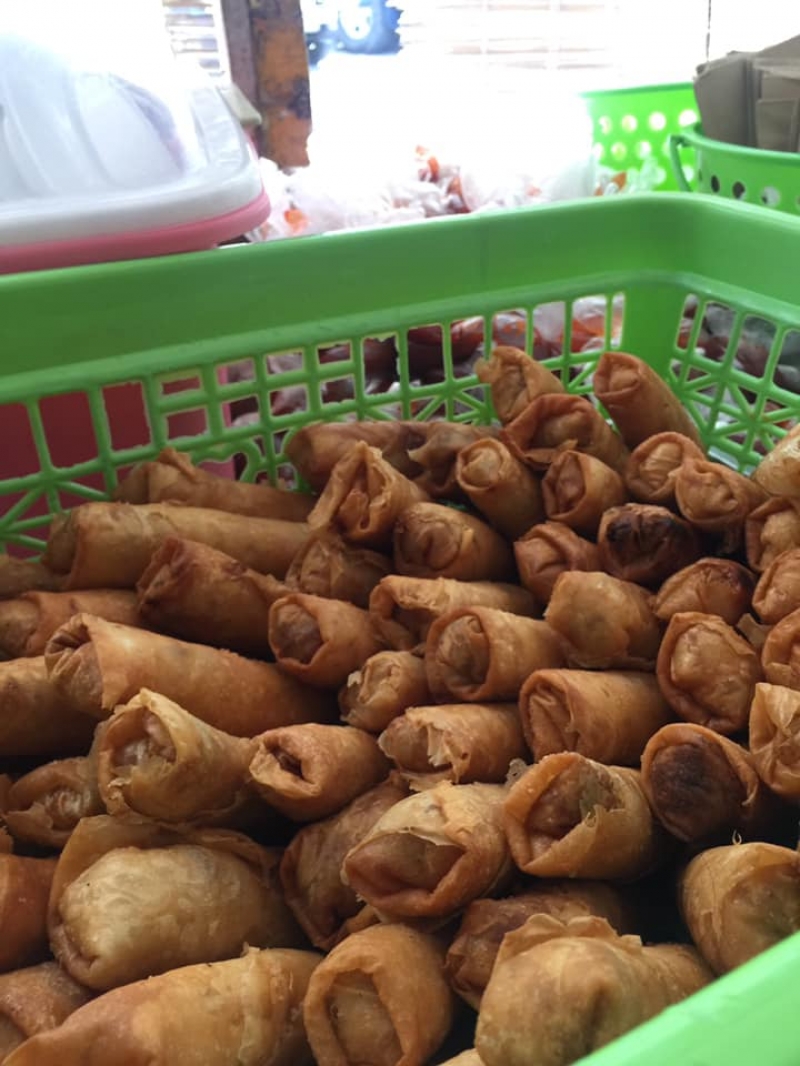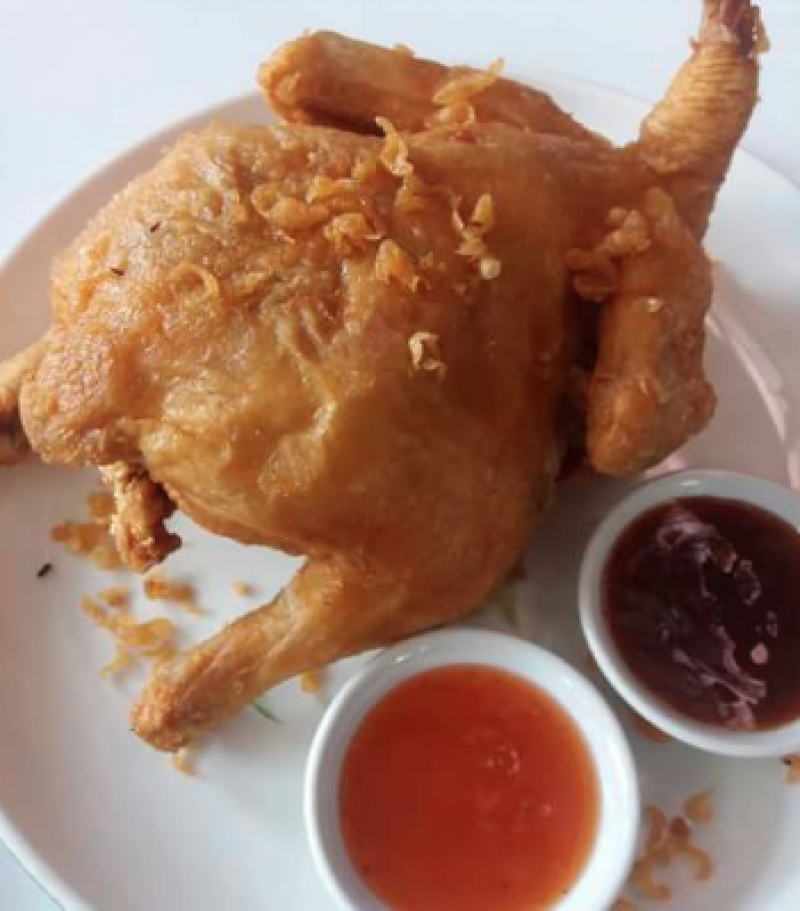The hype of the Street Food episode on Netflix which featured Cebu made a lot of buzz in the Philippines. Thanks to the four culinary heroes — Entoy Escabas, Yannix Sekong, Leslie Enjambre, and Rubilyn Manayon — Cebu is back on the culinary map. Cebuanos, undoubtedly, are very passionate when it comes to their food. After the show aired on Netflix, Cebu locals wanted to do their own street food adventure while some claimed that their favourite street food was not given much-deserved screen time.
Here’s a list of the Cebuano street food that I think deserves more screen time on Netflix!
Ngohiong

Ngohiong was contributed to the Cebu culinary scene by the early Chinese settlers. Ngohiong means five-spice powder in Chinese, but in Cebu, it is a deep-fried vegetable lumpia coated with batter, and filled with sauteed ubod or coconut pith. There is no trace of the five-spice powder flavour. But the secret to the ngohiong rolls lies in the sauces which differ in every place you can buy it.
I can vouch for two places as to where you can get delicious ngohiongs. One is Doming’s, located inside Fairlane Village Road in Guadalupe, but my favourite is Chinese Ngohiong, located along Junquera Street and a walking distance from the University of San Carlos.
Lumpia

Another Chinese culinary contribution to Cebu is lumpia or spring roll. After Rubilyn’s vegetable lumpia was featured on Netflix, Cebuanos felt like someone deserved the screen time more than her. Though not everyone in Cebu has heard about lumpia vendor, Senyang, most of the residents of Lapu-Lapu swear that she needs credit too.
Senyang’s spot is close to the school right at the centre of Lapu-Lapu City. Owner, Hertudes Tendon AKA “Nang Senyang” sells lumpia outside the school gate. Students have their own fond memories of Nang Senyang. She’s lenient on the students who lack money and would still let them eat her lumpia. Those students, now professionals, would often find their way back to Senyang to satisfy their lumpia cravings and to reminisce about their childhood. Little did Nang Senyang know that she played an important role for the kids while they were growing up. Yes, she is an unsung culinary hero to those who know her well.
Siomai
Siomai was introduced by the Chinese (again!). Siomai is a Chinese dumpling made of ground pork, beef, chicken or shrimp wrapped in wonton wrappers. It is commonly steamed but there are some that are fried, which result in a crisp wonton exterior that is likened to a lumpia wrapper. A siomai is best paired with a puso (hanging rice) and generously smothered with chilli oil according to your preference.
You are a Cebuano if you know where to find the “Original Siomai Sa Tisa”. The phrase became a household name when almost every stall in the city started claiming that they served the “Original Siomai Sa Tisa”. But the original is found in Tisa, Labangon. You can visit two stalls that are strongly recommended by locals: Siomayan Sa Tisa and Way Tugpahay.
Fried Chicken

Fried chicken is the easiest to prepare when you are in a hurry. It is also available near schools, churches or pungko-pungko spots. But there is a stall in Cebu City that most college students frequent for lunch whether for dining in or to-go. Tagala Chicken Butterfly has its own way of frying their chicken. And if you’re lucky, you get to have a small pack of crumbs to go if you ask ate nicely.
Barbecue

The barbecue in Cebu City, or ihaw-ihaw as Manileños call it, is cheaper compared to those sold in Manila. If one is craving for grilled pork, Cebuanos will easily point to Larsian near Fuente Circle in the downtown area. You can choose your food and have it cooked by the stall vendor. Locals and tourists alike frequent the place and it is usually packed at night. If you happen to visit Larsian, don’t forget to try the chorizo de Cebu. There are also other well-known places to get barbeque like Matias in Mandaue or Dorting’s in Lapu-Lapu City.
Su-Tu-Kil
Su-tu-kil is a portmanteau of the words Sugba (grill), Tula (boil) and Kilaw (soaked in vinegar) which is the trinity of Cebuano cooking. Su-tu-kil refers to how you want your seafood to be prepared. Their stalls can be found near the Lapu-Lapu or Liberty Shrine on Mactan Island. Parr’t Ebelle in the North Reclamation Area in Mabolo offers good Su-tu-kil, too. There is an array of stalls all lined up with fresh seafood choices like fish, crabs and scallops waiting to be prepared according to your preference.
Ginabot
Ginabot or chicharon bulaklak is made of pork intestines that are dried, salted then deep-fried until crisp and golden brown. This is best eaten after dipping in vinegar or soy sauce. Warning: this should be taken in moderation as ginabot is a source of cardiovascular-related illness.
Ginabot can be enjoyed everywhere, as it is available in almost every nook and cranny in the city like the pungko-pungko stalls near Redemptorist Church or down south behind the Pardo Public Market (across Pardo Church).
Pochero
Pochero, meaning “stewpot”, originated from Andalusia, Spain. This is similar to Luzon’s bulalo but sans the tomato sauce. The Cebuano version is a broth made of slow-cooked beef shanks with bone marrow, vegetables in season, onions, leeks, salt and peppercorns. It is served with corn, bamboo shoots and plantain banana or “saba”. The banana slices add a natural sweetness to the stew.
A piping-hot bowl of pochero is best enjoyed on a rainy day. Cebuanos suggest Ekit’s Foodhaus or Kusina Uno.
Lansiao
Lansiao or the mysterious aphrodisiac properties of Soup #5 is said to increase one’s libido. It is a soup made of bull or horse’s testicles or genitals. Pair this with a generous serving of steamed rice or ground corn, and you have a hearty meal. Taxi and jeepney drivers usually frequent Ramos Street which has a famous lansiao eatery.
Street food is a whole different food category. Not only does it speak of the city’s culture and influences, but it also serves as comfort food synonymous to getting something delicious, readily available, and easy on the pocket. Street food has become a staple any time of the day — whether you are a student, employee or simply trying to sober up after a night of binge-drinking!
This article originally appeared in Tripzilla Philippines on May 7, 2019.













